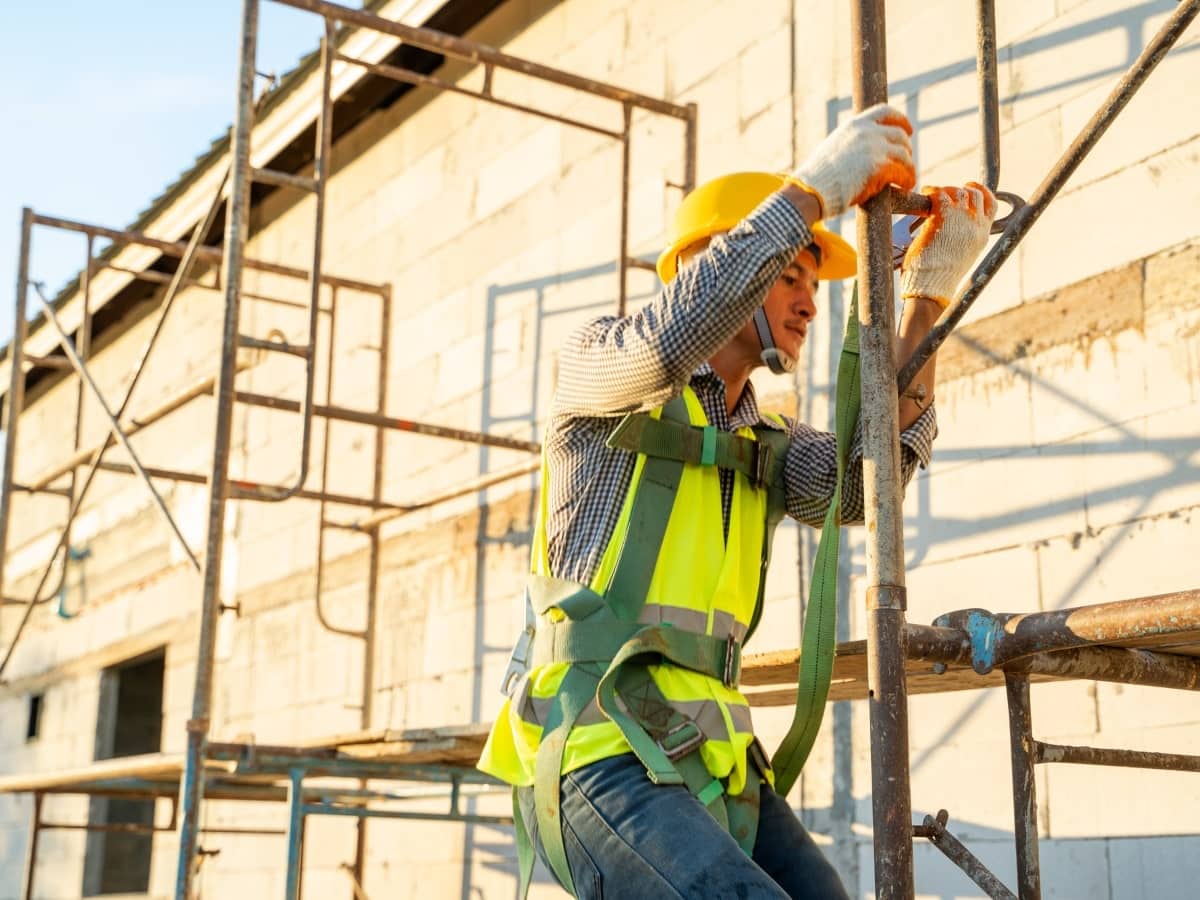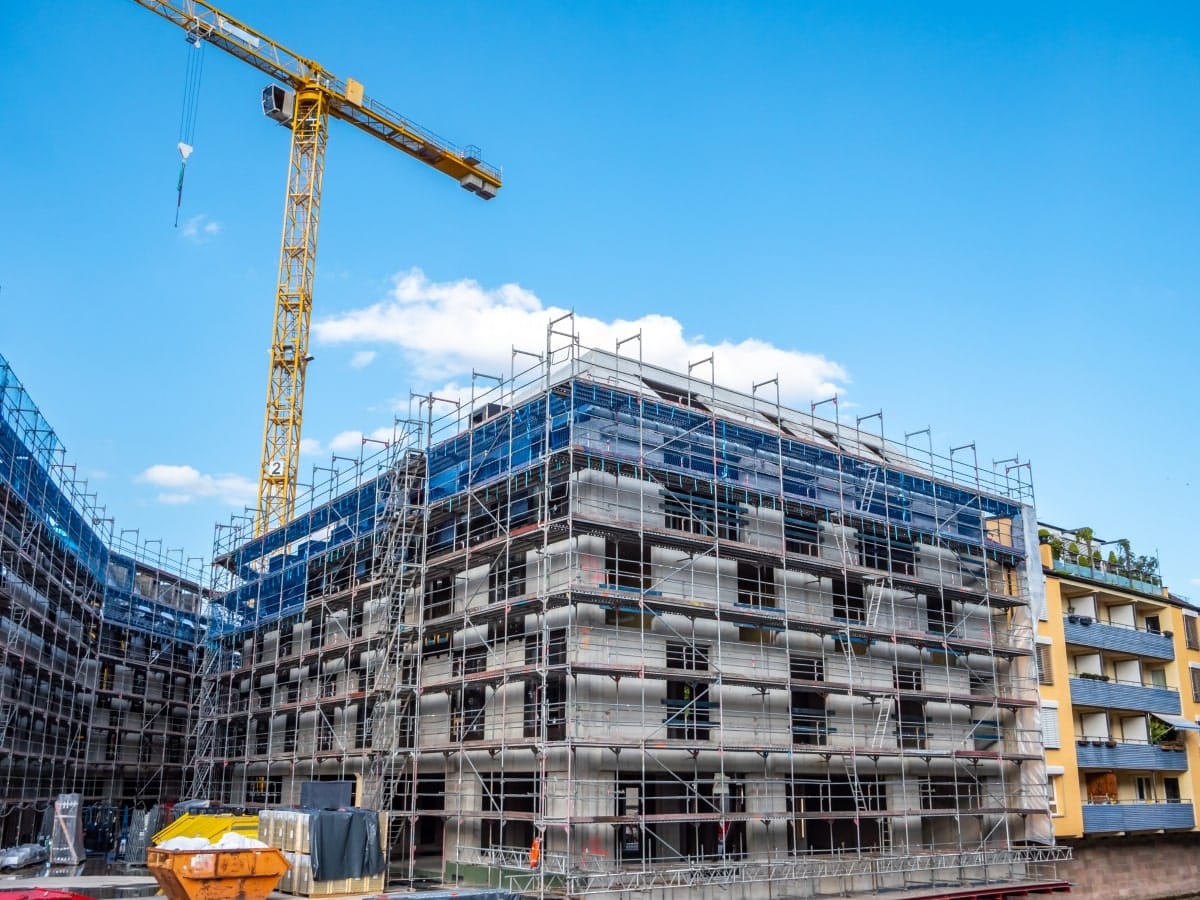Safety is paramount on construction sites, and edge protection plays a crucial role in safeguarding workers from the perils of falling from heights. As teams navigate ledges, roofs, and other potential fall hazards, reliable edge protection systems become indispensable.
Understanding edge protection systems
At its core, an edge protection system refers to a comprehensive set of measures and devices specifically designed to prevent falls from heights. Predominantly used on roof edges, these systems act as both a physical barrier and a deterrent against key risk factors for falls.
An edge protection system might include components like guardrails, handrails, scaffold netting and even protective cages, all strategically installed to form a barrier against falls. These systems are instrumental in fall protection, reducing the risk of accidents by preventing personnel from inadvertently stepping over the edge.
Furthermore, they serve a dual purpose by providing clear visual cues that help workers navigate the site safely. By delineating safe zones and highlighting construction site hazards, edge protection systems significantly enhance overall site safety, making them an indispensable element in the construction industry’s commitment to safeguarding its workforce.

Ensuring height safety with a roof edge protection system
Operating near edges undeniably presents heightened risks in the construction industry. The perilous nature of such work can lead to accidents, with falls being one of the most common and severe outcomes.
Roof edge protection systems act as the first line of defence in such scenarios. By creating a robust physical barrier, these systems prevent accidental slips and trips from translating into devastating falls.
Moreover, by capturing or deflecting falling debris, they play a dual role – protecting those at height from tripping hazards and shielding those below from potential injury.
The added confidence that temporary edge protection systems provide to workers can also lead to enhanced efficiency and productivity, knowing that their well-being is safeguarded while ensuring height safety.
Risks and potential hazards associated with roof work
Individuals working on roofs or ceiling spaces, including electricians, plumbers, pest control workers, and others accessing these areas, face significant dangers of electrocution and falls from heights.
Navigating a roof surface poses several inherent risks, requiring a deep understanding of both the surface and its associated hazards for effective edge protection implementation.
- Falls: Among the most prevalent dangers are falls, which can be the result of uneven surfaces, tripping over equipment, or a lack of effective edge barriers.
- Falling objects: Falling debris, either due to construction work or deteriorating materials, presents a dual threat – to those both on the roof and below.
- Roof structure: Fragile roofs, often seen in older buildings or those with specific roofing materials, can collapse under weight, leading to catastrophic accidents.
- Roof access: Safe access points, if not well-constructed or secured, can be entryways for accidents, be it while ascending, descending, or simply manoeuvring. This is where temporary access, such as ladders is needed.
Various methods can secure edge protection, from fasteners to freestanding systems, each suited to the unique demands of the roof’s architecture.

Best practices for ensuring safety for roof workers
Edge protection during roof construction is not just a safety measure but also a regulatory requirement. Its implementation can vary greatly, from guards and handrails to scaffold-based systems, each chosen based on the structure’s height and the nature of the work.
To comply with the Work Health and Safety guidelines established by bodies like Safe Work Australia, it’s frequently essential to put in place strong systems that adhere to these standards.
The need for edge protection to comply with relevant safety regulations can depend on various factors, such as the height of the structure and the proximity of workers to the structure’s edge. Typically, in areas where there is a risk of falls from heights of 2 metres or more, it is usually essential to install such a system.
Edge protection products and their applications
Selecting the right edge protection products involves considering factors like the structure’s height, the feasibility of attachment, and regulatory safety guidelines. The right system can significantly reduce the risks associated with working at heights.
Selecting the right edge protection products is crucial for ensuring safety during construction projects, especially when work is being carried out at significant heights.

Temporary edge protection for short-term projects
Different projects require diverse solutions. Temporary edge protection is specifically designed to be removed once it’s no longer necessary, offering a balance between safety and convenience, especially in areas that do not typically experience foot traffic.
Guardrail systems
One of the primary solutions is a guardrail system, which serves as a physical barrier to prevent workers from falling off the edges. It is a versatile solution that can be adapted to various heights and building designs, complying with strict safety regulations.
Toe boards
Toe boards are another essential component, installed at the base of guardrails to prevent tools and other small objects from slipping off the edge, thereby protecting those below.
Scaffold netting
Scaffold net rolls are also widely used in the industry; these flexible nets are draped along the scaffold, catching falling debris and tools, and they provide a degree of weather protection.
Barriers
Physical barriers, such as barrier mesh act similarly but are usually more rigid and can be used to delineate safe zones. Installing temporary fencing and barricading on construction sites helps to keep workers safe, while pedestrian barriers work to guide the public away from potentially hazardous areas.
Mid-rail access ladders
For structures with multiple levels, mid-rail access ladders are integral, providing safe and convenient access while maintaining a protective barrier against falls.
TTFS site accessories for roof safety and edge protection
For a safe construction site when working at heights, edge protection is essential for preventing falls. TTFS offers an array of high-quality construction site accessories, from temporary fencing and barriers to scaffold net rolls and barrier mesh, designed to meet safety standards.
With our 24-hour delivery from five locations throughout Australia, you can rely on TTFS for reliable access to temporary fencing and other site accessories when you need them.
For comprehensive solutions that safeguard your construction site, get in touch with our knowledgeable team today by calling 1300 876 614 or by completing an enquiry form online.

